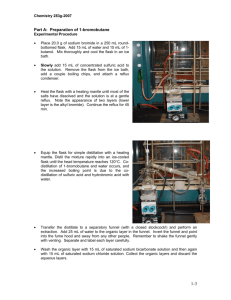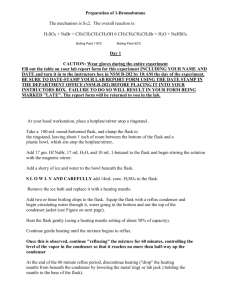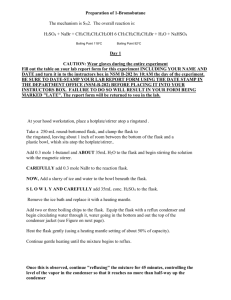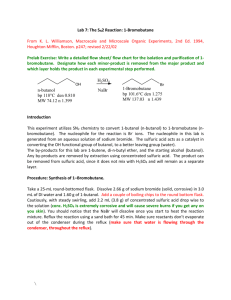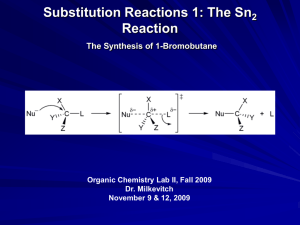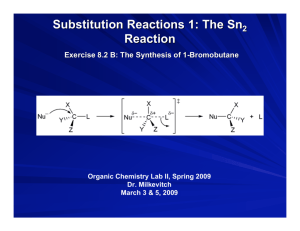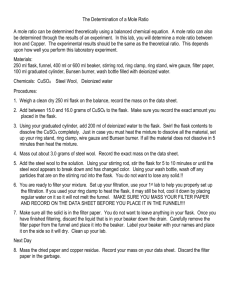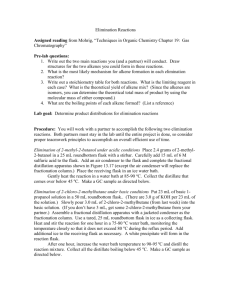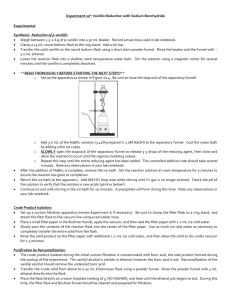Preparation of 1
advertisement
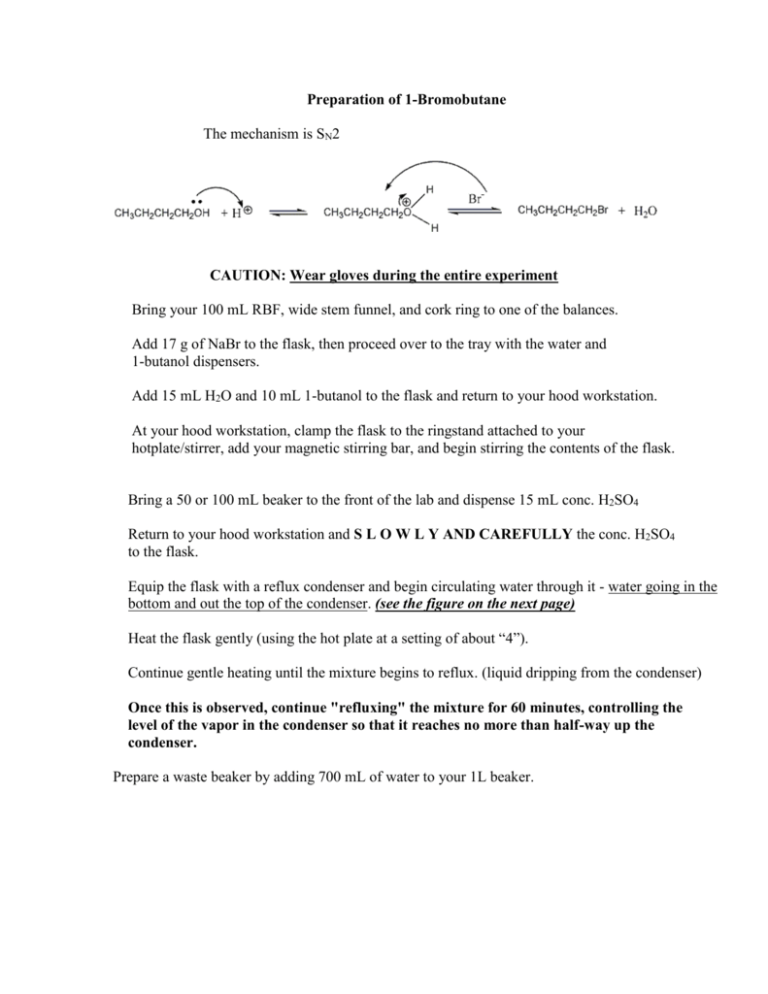
Preparation of 1-Bromobutane The mechanism is SN2 CAUTION: Wear gloves during the entire experiment Bring your 100 mL RBF, wide stem funnel, and cork ring to one of the balances. Add 17 g of NaBr to the flask, then proceed over to the tray with the water and 1-butanol dispensers. Add 15 mL H2O and 10 mL 1-butanol to the flask and return to your hood workstation. At your hood workstation, clamp the flask to the ringstand attached to your hotplate/stirrer, add your magnetic stirring bar, and begin stirring the contents of the flask. Bring a 50 or 100 mL beaker to the front of the lab and dispense 15 mL conc. H2SO4 Return to your hood workstation and S L O W L Y AND CAREFULLY the conc. H2SO4 to the flask. Equip the flask with a reflux condenser and begin circulating water through it - water going in the bottom and out the top of the condenser. (see the figure on the next page) Heat the flask gently (using the hot plate at a setting of about “4”). Continue gentle heating until the mixture begins to reflux. (liquid dripping from the condenser) Once this is observed, continue "refluxing" the mixture for 60 minutes, controlling the level of the vapor in the condenser so that it reaches no more than half-way up the condenser. Prepare a waste beaker by adding 700 mL of water to your 1L beaker. At the end of the 60 minute reflux period, discontinue heating Once the contents of the flask ceases to bubble, remove the reflux condenser, unclamp the flask from the ringstand and pour the contents of the flask into the Separatory funnel. Separate the lower aqueous layer from the organic layer and add it to the contents of your 1 L waste Beaker, WITH STIRRING. (Why is the aqueous layer on the bottom?) Extract the organic layer with 15 mL H2O. Separate the UPPER aqueous layer from the organic layer and add it to the contents of your 1 L waste Beaker, WITH STIRRING. Extract the organic layer with 15mL saturated sodium bicarbonate. Drain the lower ORGANIC layer into a DRY 50 mL Erlenmeyer flask, and add CaCl2 . Swirl the flask occasionally for a period of 2 minutes. (Why was the organic layer now on the bottom?) Allow the drying agent to settle and DECANT the liquid into a TARED sample bottle, appropriately labeled. Save it in your locker for the alkyl halide tests. Notes: Initially, the reaction is exothermic which makes the reaction occur, but quickly loses the energy, so the energy must be supplied by the heating mantle in order to complete the reaction as much as possible. Refluxing is a means of trapping the vapors of the reactants and cooling them enough to return to the reaction flask. There, they have another opportunity to react to form 1-bromobutane To separate the 1-bromobutane, a series of extractions are performed. To determine which layer is the 1-bromobutane layer, you take a test tube and add 5 mL of water to it, then remove a few drops of the bottom layer from the separatory funnel and see if they fall through the water to the bottom. If they do, the bottom layer is the 1-bromobutane layer or organic layer, if not, the upper layer is the organic layer. To confirm your decision, remove a few drops of the top layer in the separatory funnel with a pasteur pipette and place them in a dry test tube and add 2 to 3 mL of water, dropwise, to see if it falls to the bottom. The larger layer should be the water layer. Washing with water simply removes any unreacted H2SO4 molecules. Washing with saturated NAHCO3 removes any remaining H2SO4 molecules. The water is removed by CaCl2, as described in the propanoic acid experiment.
